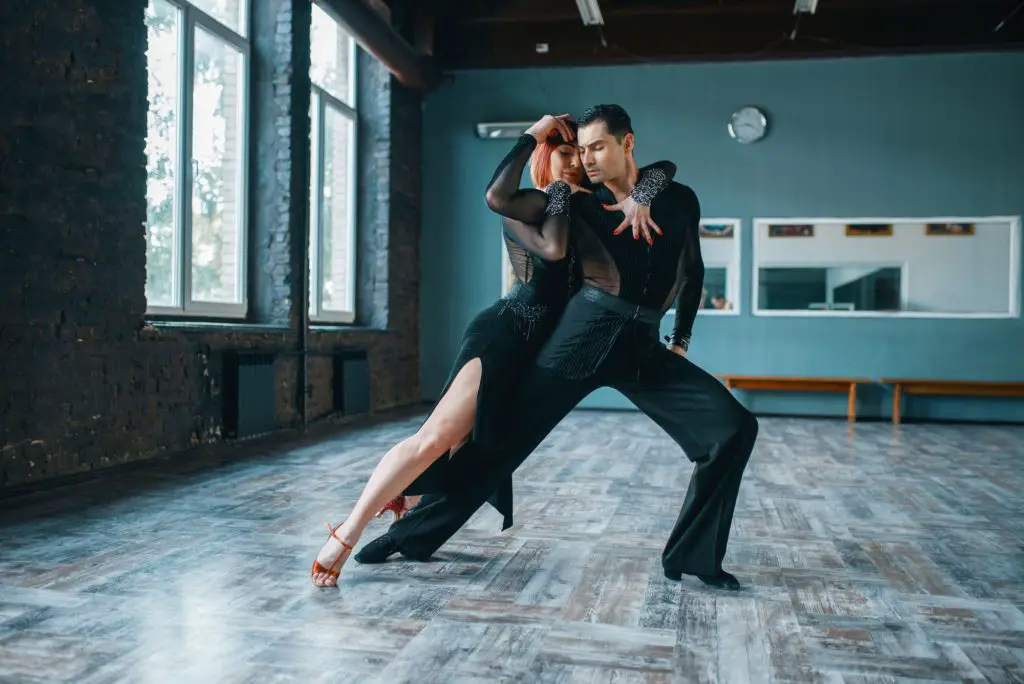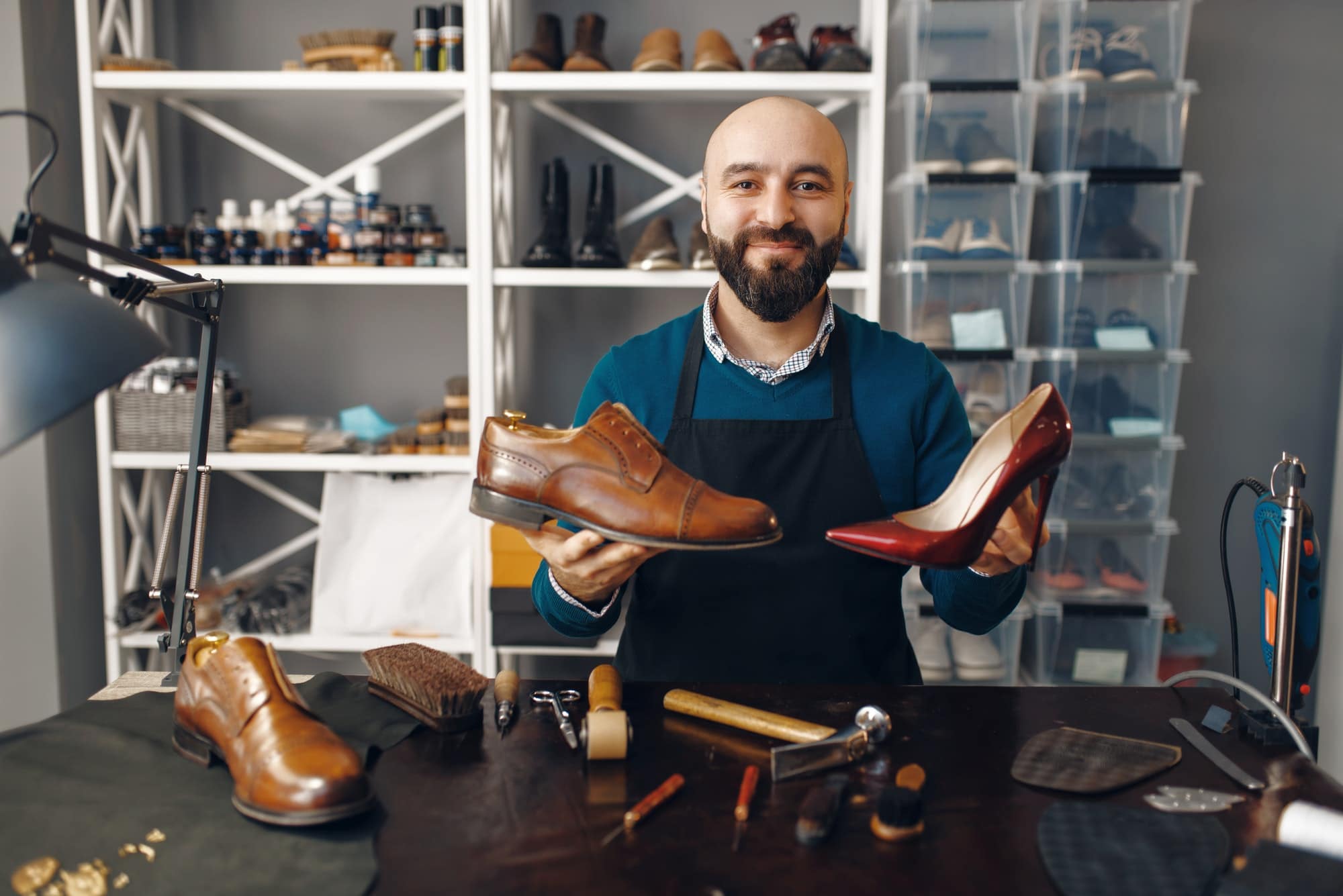Many athletic shoes boast about their tread, traction and grip. This is because a large majority of sports require you to have a good amount of traction while you play.
Whether it be running cross-country, playing basketball on an outdoor court, or running to catch the ball in a baseball game, you generally want a good amount of grip and tread to keep you from falling and injuring yourself.
Related: How to Make Your Shoe Sole Less Slippery with More Grip
However, not every activity is benefited by a very grippy shoe If you are going to a ballroom dance or Zumba class, for example, you will not want a shoe that has heavy traction and will keep you from being able to safely complete moves or gracefully execute fancy dance steps.
If this is the case, you might find yourself wondering how you can make your current shoes work to this end.
You can make a pair of shoes slippery by using sandpaper, smooth and sturdy tapes, a rough surface, adhesive-backed suede, or even something as simple as a nail file. It is actually quite easy to reduce the traction on your shoes with items you already have lying around your house.
Depending on what type of sport or activity you want to do, and what you have available around your house, you can make a pair of shoes you already have work for your needs without much hassle.
You can reduce traction over the entire sole or just in certain areas and fully customize your shoes to your needs.
Making Your Shoes More Slippery
If you want to make a pair of shoes you already have less grippy, there are a few ways to accomplish this.
Sandpaper and oil
- Start at the top or bottom of the sole and sand the sole of the shoe by rubbing the sandpaper in small circles. Move slowly and make sure the sole is being sanded down equally all over. The goal is to reduce the depth of the tread – the more tread, the more grip.
- After you have completed both shoes, you can choose to use cooking oil like olive oil to finish them. Get a paper towel oiled down and rub the sole of each shoe all over with oil. Wipe off the excess and let it dry.
Nail File
- Using a nail file to reduce the tread on two full shoes might be a big undertaking, but it is an option if you do not have sandpaper lying around.
- Nail files are also good for small areas, like if you need to reduce the traction only in certain spots on the bottom of your shoe.
- Similarly to sandpaper, do your best to move the nail file in small circles, and work methodically to avoid overdoing it.
Sandy surface
- If you do not need too much grip taken off, you can run for a bit on a hard surface that has a coating of sand or rough sediment on it.
- This might also be helpful for wearing the sole down specifically to your wear patterns.
Gaffer Tape
- For a less permanent solution, you can use gaffer tape or another sturdy cloth-based tape.
- Place the tape in key areas such as covering the full heel, ball, and toe of the sole. Trim off the excess to avoid creating a hazard for yourself.
- This is less permanent, but gaffers tape may still be difficult to remove, (or leave a sticky residue), after you have been using your shoes for a while.
Suede Sole kits
- You can order a suede sole kit online or possibly find one in your local dance or shoe store.
- The kit will come with a sheet of suede with an adhesive backing. You can cut it to the shape of whatever shoe you like, and apply it directly to your sole as it currently stands.
- Some hip hop shoes have suede on just certain parts of the shoe, such as the ball, for spinning or to have the option of traction at some points and not at others. You can use a suede sole kit for this as well by just trimming the adhesive suede to fit whatever area you want less traction on.
What if I Make my Shoe too Slippery?
When you are working with sandpaper or other do-it-yourself ways to reduce traction on your shoe, there is always a possibility of going too far.
Fortunately, there are a few solutions that allow you to keep your shoes and modify how slippery they are if necessary.
| Grip Method | Pros & Cons |
| Grip tape or pad | Adhesive-backed Easy to apply Area-specific |
| Hairspray | On-hand Not permanent |
| Traction Spray | Easy to apply Not permanent |
If you either want your shoes to have grip again or if you went slightly too far in one area with the sandpaper, you may be able to use one of these options to regain some traction.
Grip tape or pads are probably the easiest and most functional of the options, as they allow you to target a specific area that may need a little grip while maintaining the slipperiness of the rest of the sole.
However, because you are going to be walking on the pad and tape, while it will last longer than a spray, it is only a temporary solution. While it is easy to make a shoe more slippery, you can’t completely and permanently bring traction back.
Hairspray is a great solution that you might already have in your house. However, both hairspray and traction spray will wear off quickly depending on what you are doing in your shoes. It is also more difficult to spray only a small area and may not be worth it for that purpose.
Why Would Someone Want Slippery Shoes?
In the dance world, there are at least two reasons why you might want your shoes to have less traction.
- You do not want to buy special dance shoes
- You want to wear non-dance shoes to a performance
Dance shoes can be on the pricey side, especially a good pair. If you already have an extra pair of shoes lying around, you might want to just modify the shoe to meet your needs, versus spending the money for a brand new shoe that can only be used for one activity.
Additionally, you might want to try out a dance class before committing to a new pair of shoes. Modifying an existing pair of shoes to allow you to get the full dance class experience may save you money in the long run if you decide it’s not for you.
Within dance classes, you will often do performances. For these events, you will probably want to dress up in a way that elevates your routine, including special shoes. If your dance shoes do not fit the vibe of your performance, you might want to modify a non-dance shoe to be more slippery and allow you to perform without impediment.
Types of Dance for Slippery Shoes

Many types of dance shoes are made with little traction or grip on the soles. This is because dance requires you to move fluidly in all directions.
Some injuries associated with dance can potentially be prevented by wearing proper shoes, namely shoes that will allow for twisting and quick movements.
Injuries such as tearing the meniscus of the knee tend to occur when your foot stays in one place, and your knee twists in another direction, which can happen when you are wearing a grippy shoe.
Shoes associated with different types of dancing traditionally have different types of soles.
| Dance Type | Sole Type |
| Jazz | Rubber or suede Rubber has light Grip |
| Ballroom | Suede or leather |
| Hip hop | Sneaker look Spin pads Suede or rubber |
| Zumba | Sneaker look Minimal tread |
Depending on what type of dance you are doing, you may want some grip and tread or none at all.
Most jazz and ballroom dance shoes are built for the smoothest fluid movements and will have the least amount of traction. Ballroom shoes tend to come primarily with suede or leather soles, giving them the least amount of grip but allowing for the most graceful and fluid sashaying across the dance floor.
Hip hop and Zumba classes will want to allow for minimal traction for certain moves but the ability to move fluidly easily and when necessary.
Hip hop dance shoes will often have spin pads, sometimes a suede patch on rubber soles, so you can move appropriately and smoothly when your foot is in certain positions, and keep you gripped to the floor when your foot is in others.
Related: Best Non Slip Shoes for Chefs and Restaurant Workers
A Word From Love At First Fit
Making your shoes more slippery is a fairly simple endeavor. Whether you want to turn a simple sneaker into a cool ballroom dance shoe with suede soles, take down the tread on your athletic shoes so you can safely move through your Zumba class, or customize your Nikes to give you a slippery spin spot with minimal traction on the rest of the sole, it is all possible and relatively easy to do.
Source
- https://www.businessinsider.com/best-zumba-shoes
- https://www.bustle.com/articles/195042-7-hacks-to-make-boots-slip-proof-so-you-can-survive-winter-weather-without-injury
- https://www.ehow.co.uk/how_7874057_make-shoes-slippery-latin-dancing.html

Austin is the author of loveatfirstfit.com and a personal trainer with extensive knowledge in nutrition. Austin is passionate about helping others to find a suitable healthy lifestyle and feel good about themselves. Austin’s goal is to help people push their limits and achieve their physical performance.

